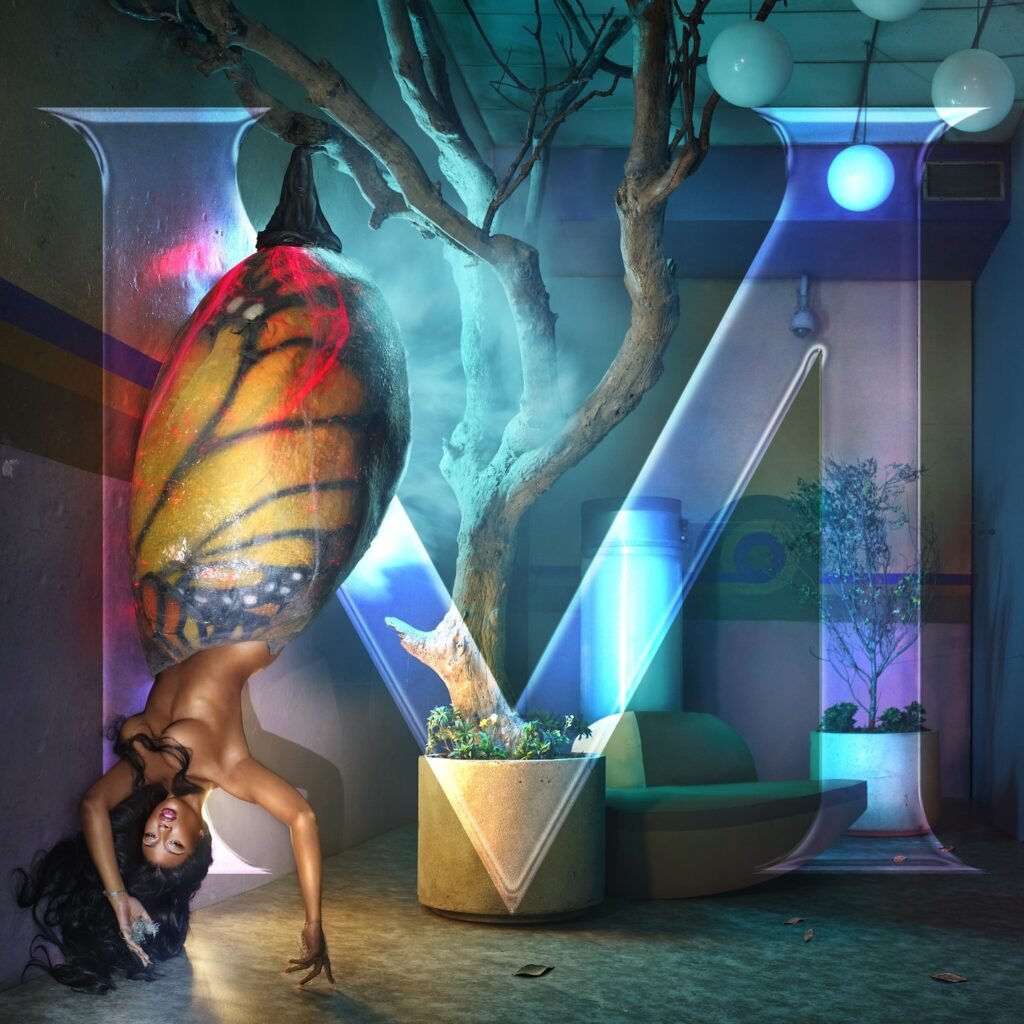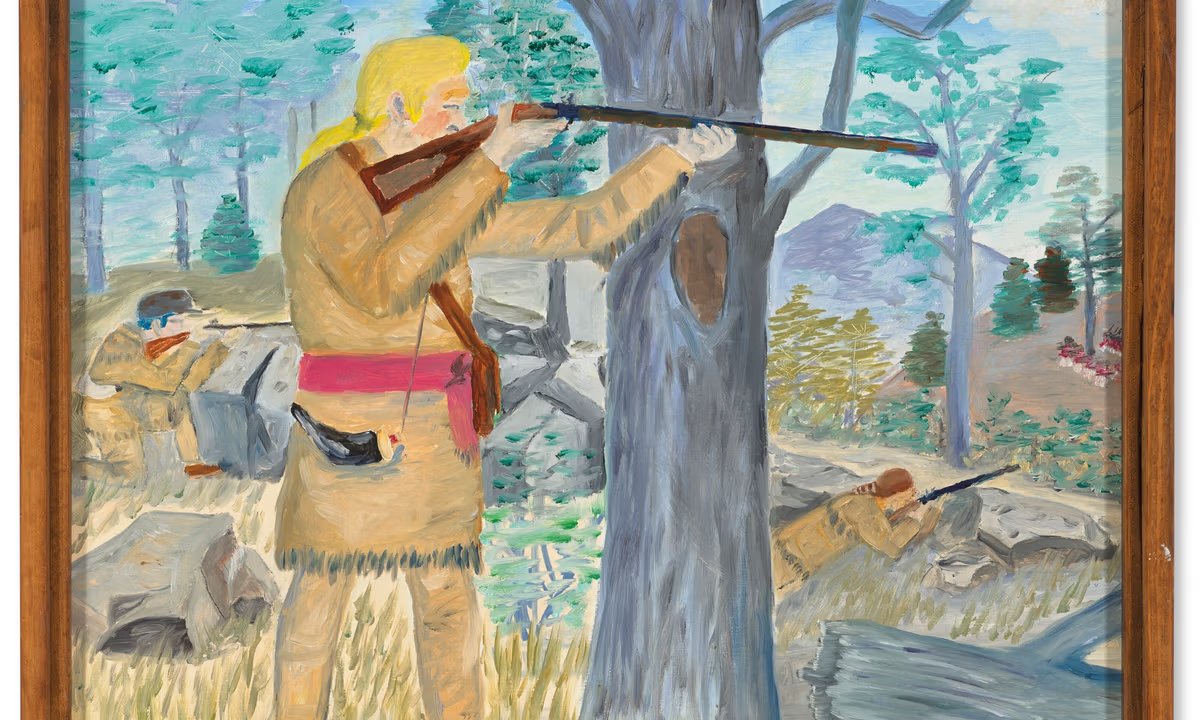Missing from the discussion, as with most online discourse, was context. Both covers were shot by photographer David LaChapelle, one of the most notable image makers in hip-hop history. In recent years, LaChapelle masterminded Travis Scott’s “Astroworld,” featuring the rapper’s head as an inflatable sculpture, and the celestial cover for Doja Cat’s “Planet Her.” Neither of those covers proved as divisive. So what happened this time?
For decades, LaChapelle has been the photographer musicians called when they needed an instantly iconic image: think Britney Spears’ Lolita-ish “Rolling Stone” cover, or Tupac Shakur, glistening in a bubble bath.
“You know it’s a David LaChapelle photo when you look at it,” says Vikki Tobak, a hip-hop journalist and the author of “Contact High: A Visual History of Hip-Hop.” “His style is so specific, and he’s known for that highly stylized, super vibrant, surreal imagery.”
That uncanny surreality is most apparent on the cover of Thee Stallion’s eponymous “Megan.” Illuminated by a giant transparent “M,” the rapper is upside-down, nude and emerging from a chrysalis that hangs from a bare tree. Some observers assumed the art was generated by artificial intelligence.
“That was pretty much analog,” LaChapelle says of the “Megan” cover. “We built that set, lit it, put a little bit of smoke … if that looks like AI, I’d like to know what buttons to press.”
Due out June 28, “Megan” comes after several tumultuous years for the 29-year-old Houston rapper. Since scoring two No. 1 hits in 2020, Megan has settled a dispute with her original record label and was shot by musician Tory Lanez, an assault that landed him in prison for 10 years.
Imagery around lead singles “Cobra,” “Hiss” and “Boa” has seen Megan shedding her skin and emerging anew, a theme captured on subsequently released alternative art for “Megan.” LaChapelle’s cover uses a different zoological metaphor, keying in on transformation and landing on the chrysalis, which he decided to put not in a “pretty garden” but on a set fashioned to look like one of America’s abandoned malls (which was shot sideways and turned 90 degrees in post).
“I wanted to contrast the beauty of the chrysalis and the butterfly with this abandoned mall and put it somewhere unexpected,” the photographer says.
The redemption arc captured on “Megan” is reminiscent of Tupac’s famous bathtub photo shoot, which came after the legendary rapper had survived a 1994 shooting and spent time in prison on sexual abuse charges before being released pending an appeal.
“This vulnerability and martyrdom all comes out in both photos,” Tobak says. “He’s really good at zeroing in on that.”
If Ice Spice is feeling vulnerable, the cover of “Y2K!” (due out July 26) doesn’t show it. The art finds the Bronx rapper posed against a brick wall, in green lizard skin stilettos and booty-flaunting short-shorts. New York City icons — an MTA card, a subway entrance, an overflowing garbage can with the name of the album spray-painted on it — litter the frame. The artist’s name, written in an old-school style by a “real deal” graffiti artist, was projected onto the set and subject during the shoot, LaChapelle says.
Front and center is Ice Spice’s butt, a choice that recalls another of the photographer’s muses, rapper Lil’ Kim. The Brooklyn rapper played up her flamboyant, hypersexualized persona in several LaChapelle photos, including one that featured a nude Kim covered in Louis Vuitton logos: an appropriation of luxury labels in line with hip-hop’s celebration of conspicuous consumption and a celebration of the female form.
“With women in hip-hop, the question has always been, ‘Is this the real you? Is this the real image of you that you’re putting across?’” Topak says. “If it is, great, you own your sexuality, your femininity … If it’s not, then I think that comes through in the photographs, as well.”
The upfront sexuality of Megan and Ice Spice’s album art is probably not what set the platform formerly known as Twitter ablaze: the rappers’ fans know what to expect from them. But perhaps the campiness of the kitschy photos is lost on young audiences. The New York club world from which LaChapelle comes is long gone, and it’s been 60 years since Susan Sontag defined camp’s essence as “love of the unnatural … of artifice and exaggeration.”
“[LaChapelle] is very much rooted in New York clubs that were known for their imagery: a lot of dressing up, vibrancy and that kinetic energy of nightlife during that time,” Topak says. “He is great at taking that and then turning it into something that’s so distinguishable, using color, elaborate sets and super dramatic compositions, and adding that little bit of playfulness and surrealness to it.”
LaChapelle also came up during a previous era when magazine covers and album art represented the best look at pop stars, a scarcity that does not exist in the digital age where consumers are drowning in an endless scroll of imagery.
“Today, so much content has been created so quickly,” LaChapelle says. “I’d rather do less than more and just have that be stronger … I like to do things that haven’t been seen before.”






